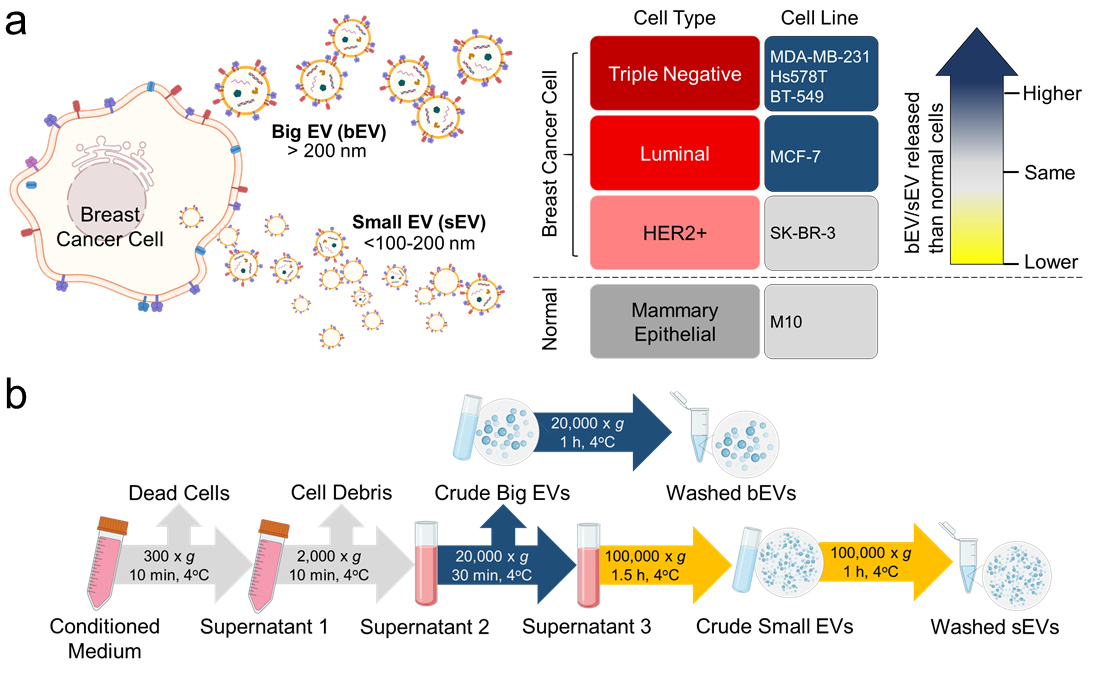
 中央研究院 生物化學研究所
中央研究院 生物化學研究所
Extracellular vesicles (EVs) are released by cells to mediate intercellular communication under pathological and physiological conditions. While small EVs (sEVs; <100-200 nm, exosomes) are intensely investigated, the properties and functions of medium and large EVs (big EVs [bEVs]; >200 nm, microvesicles) are less well explored. Here, we identify bEVs and sEVs as distinct EV populations, and determine that bEVs are released in a greater bEV:sEV ratio in the aggressive human triple-negative breast cancer (TNBC) subtype. PalmGRET, bioluminescence resonance energy transfer (BRET)-based EV reporter, reveals dose-dependent EV biodistribution at non-lethal and physiological EV dosages, as compared to lipophilic fluorescent dyes. Remarkably, the bEVs and sEVs exhibit unique biodistribution profiles, et individually promote in vivo tumor growth in a syngeneic immunocompetent TNBC breast tumor murine model. The bEVs and sEVs share mass spectrometry (MS)-identified tumor progression-associated EV surface membrane proteins (tpEVSurfMEMs), which include SLC29A1, CD9 and CD44. tpEVSurfMEM depletion attenuates EV lung organotropism, alters biodistribution, and reduces protumorigenic potential. This study identifies distinct in vivo property and function of bEVs and sEVs in breast cancer, which suggest the significant role of bEVs in diseases, diagnostic and therapeutic applications. This article is protected by copyright. All rights reserved.
